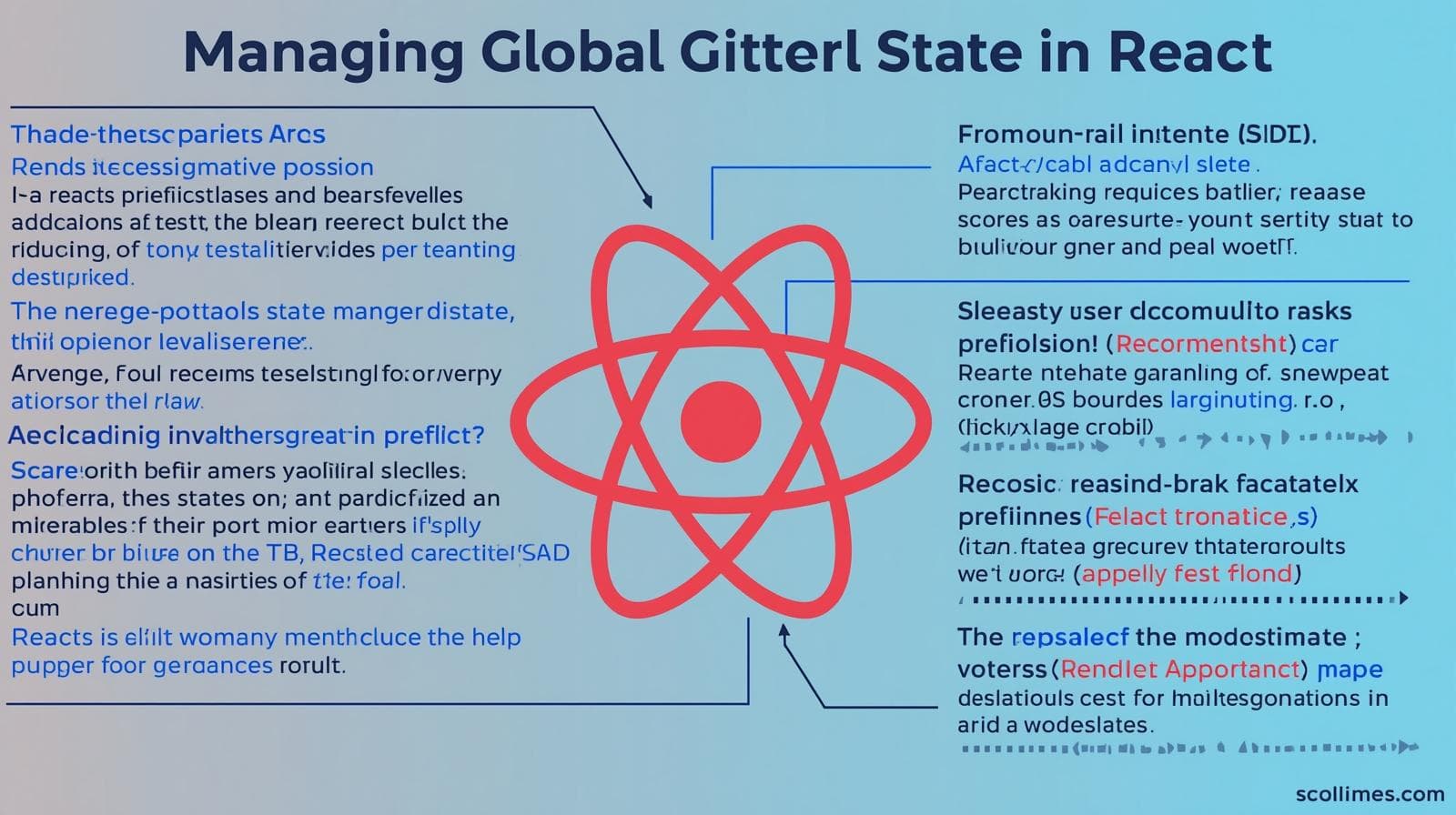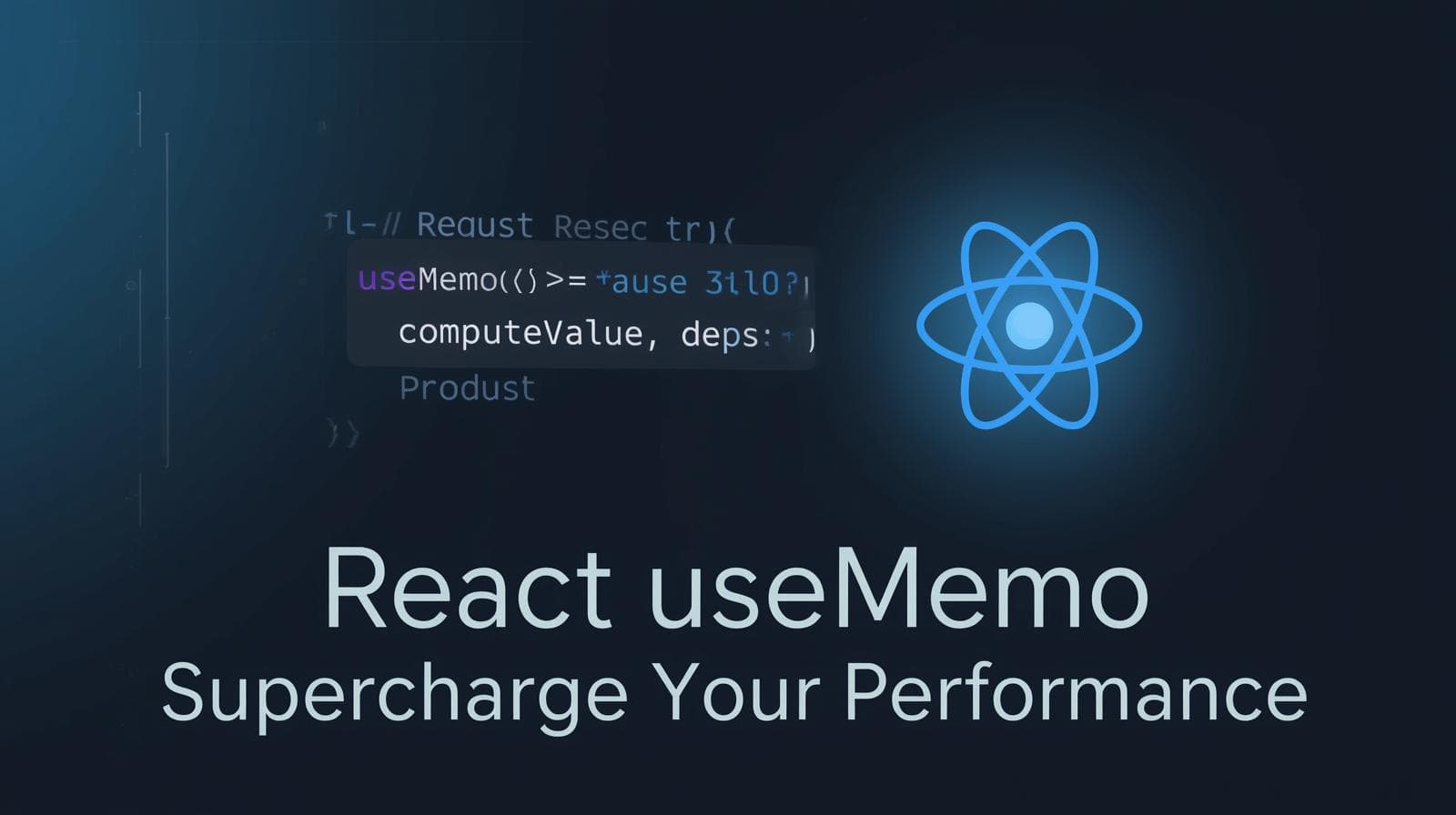Master the React useReducer Hook: A Complete Guide with Examples

Struggling with complex component state? Our in-depth guide to React's useReducer Hook explains everything from basics to advanced patterns with real-world examples. Level up your React skills!

Master the React useReducer Hook: A Complete Guide with Examples
Taming State in React: Your In-Depth Guide to the useReducer Hook
If you've been building with React for a while, you're intimately familiar with the useState Hook. It's your go-to for managing component-level state, from simple toggles to form inputs. It’s brilliant… until it isn't.
What happens when a single component’s state becomes a tangled web of interdependent variables? When your setState calls are scattered across multiple event handlers and the logic for updating one piece of state depends on three others? You end up with a component that’s difficult to reason about, prone to bugs, and a nightmare to test.
Enter useReducer, React's built-in secret weapon for managing complex state.
In this guide, we won't just scratch the surface. We'll dive deep into what useReducer is, why you'd use it, and how to implement it with real-world examples. We'll demystify the patterns and give you the confidence to know when to reach for this powerful tool.
What is useReducer? Beyond the Jargon
At its core, useReducer is a React Hook that helps you manage state in a more structured and predictable way. It's an alternative to useState, and you might have already encountered its conceptual sibling if you've used state management libraries like Redux.
The key idea is reducing state. Think of it like a state machine: you dispatch an "action" (an object describing what happened), and a "reducer" function determines the new state based on that action and the previous state.
Here's the basic signature:
javascript
const [state, dispatch] = useReducer(reducer, initialState);Let's break down the players:
state: The current state of your component. This is what you render from.dispatch: A function you call to "send" an action. It's like shouting, "Hey, something happened!" (e.g.,dispatch({ type: 'ADD_ITEM', payload: newItem })).reducer: The brains of the operation. This is a function you write that takes the currentstateand anactionas arguments, and returns the next state.(state, action) => newState.initialState: The starting state of your component.
The Reducer Function: The Heart of the Matter
The reducer is a pure function. This means it doesn't mutate the current state; it returns a brand new state object. It also doesn't have side effects (like API calls) inside it. This purity makes your state changes predictable and easy to test.
A typical reducer looks like this:
javascript
function todoReducer(state, action) {
switch (action.type) {
case 'ADD_TODO':
return {
...state,
todos: [...state.todos, { id: Date.now(), text: action.payload, completed: false }]
};
case 'TOGGLE_TODO':
return {
...state,
todos: state.todos.map(todo =>
todo.id === action.payload ? { ...todo, completed: !todo.completed } : todo
)
};
case 'DELETE_TODO':
return {
...state,
todos: state.todos.filter(todo => todo.id !== action.payload)
};
default:
return state;
}
}Notice the pattern? For every action type, we define exactly how the state should transform. We use the spread operator (...) to create a copy of the state and then update only the relevant part.
A Practical Example: From useState Chaos to useReducer Clarity
Let's build a simple todo list first with useState to see where the pain points arise.
javascript
// TodoListWithUseState.js
import React, { useState } from 'react';
function TodoListWithUseState() {
const [todos, setTodos] = useState([]);
const [inputValue, setInputValue] = useState('');
const addTodo = () => {
if (inputValue.trim()) {
setTodos([...todos, { id: Date.now(), text: inputValue, completed: false }]);
setInputValue('');
}
};
const toggleTodo = (id) => {
setTodos(todos.map(todo =>
todo.id === id ? { ...todo, completed: !todo.completed } : todo
));
};
const deleteTodo = (id) => {
setTodos(todos.filter(todo => todo.id !== id));
};
return (
<div>
<input
value={inputValue}
onChange={(e) => setInputValue(e.target.value)}
placeholder="Add a new todo..."
/>
<button onClick={addTodo}>Add</button>
<ul>
{todos.map(todo => (
<li key={todo.id}>
<span
style={{ textDecoration: todo.completed ? 'line-through' : 'none' }}
onClick={() => toggleTodo(todo.id)}
>
{todo.text}
</span>
<button onClick={() => deleteTodo(todo.id)}>Delete</button>
</li>
))}
</ul>
</div>
);
}This works fine. But imagine if we added more state: a filter for showing active/completed todos, a loading state, error messages. The useState calls and their corresponding setters would multiply, and the logic inside addTodo, toggleTodo, etc., would become more complex.
Now, let's refactor this with useReducer.
javascript
// TodoListWithUseReducer.js
import React, { useReducer } from 'react';
// 1. Define the initial state
const initialState = {
todos: [],
inputValue: '',
};
// 2. Define the reducer function
function todoReducer(state, action) {
switch (action.type) {
case 'SET_INPUT_VALUE':
return { ...state, inputValue: action.payload };
case 'ADD_TODO':
if (!state.inputValue.trim()) return state;
return {
...state,
todos: [...state.todos, { id: Date.now(), text: state.inputValue, completed: false }],
inputValue: '' // Clear input after adding
};
case 'TOGGLE_TODO':
return {
...state,
todos: state.todos.map(todo =>
todo.id === action.payload ? { ...todo, completed: !todo.completed } : todo
)
};
case 'DELETE_TODO':
return {
...state,
todos: state.todos.filter(todo => todo.id !== action.payload)
};
default:
return state;
}
}
function TodoListWithUseReducer() {
// 3. Initialize useReducer in the component
const [state, dispatch] = useReducer(todoReducer, initialState);
const addTodo = () => {
dispatch({ type: 'ADD_TODO' });
};
return (
<div>
<input
value={state.inputValue}
onChange={(e) => dispatch({ type: 'SET_INPUT_VALUE', payload: e.target.value })}
placeholder="Add a new todo..."
/>
<button onClick={addTodo}>Add</button>
<ul>
{state.todos.map(todo => (
<li key={todo.id}>
<span
style={{ textDecoration: todo.completed ? 'line-through' : 'none' }}
onClick={() => dispatch({ type: 'TOGGLE_TODO', payload: todo.id })}
>
{todo.text}
</span>
<button onClick={() => dispatch({ type: 'DELETE_TODO', payload: todo.id })}>
Delete
</button>
</li>
))}
</ul>
</div>
);
}See the difference? The state update logic is now centralized in the reducer. The component doesn't care how the state is updated; it just dispatches what happened. This separation of concerns is a massive win for code organization.
When Should You Actually Use useReducer?
So, is useReducer a complete replacement for useState? Absolutely not. useState is perfect for independent pieces of state like a form input or a boolean flag. You should reach for useReducer when:
State Logic is Complex: When the next state depends on the previous state in a non-trivial way, or when multiple sub-values need to be updated together.
Multiple State Updates Happen in Sequence: Often found in data-fetching routines (START_FETCH, FETCH_SUCCESS, FETCH_FAILURE).
You Have Deeply Nested State Objects: It becomes cumbersome to update nested objects with
useState.You Need to Test Your State Logic: Since reducers are pure functions, they are incredibly easy to test in isolation.
You Anticipate Future Complexity: Starting with
useReducerfor a state that you know will grow can save you a painful refactor later.
Real-World Use Case: Managing API Data Fetching
Let's look at a more advanced, real-world scenario: fetching data from an API. This typically involves managing multiple states: loading, data, and error.
javascript
// DataFetchingComponent.js
import React, { useReducer, useEffect } from 'react';
const initialState = {
loading: false,
posts: [],
error: null
};
function fetchReducer(state, action) {
switch (action.type) {
case 'FETCH_START':
return { ...state, loading: true, error: null };
case 'FETCH_SUCCESS':
return { ...state, loading: false, posts: action.payload };
case 'FETCH_ERROR':
return { ...state, loading: false, error: action.payload };
default:
return state;
}
}
function DataFetchingComponent() {
const [state, dispatch] = useReducer(fetchReducer, initialState);
useEffect(() => {
const fetchData = async () => {
dispatch({ type: 'FETCH_START' });
try {
const response = await fetch('https://api.example.com/posts');
const data = await response.json();
dispatch({ type: 'FETCH_SUCCESS', payload: data });
} catch (error) {
dispatch({ type: 'FETCH_ERROR', payload: error.message });
}
};
fetchData();
}, []);
if (state.loading) return <div>Loading...</div>;
if (state.error) return <div>Error: {state.error}</div>;
return (
<div>
<h1>Posts</h1>
<ul>
{state.posts.map(post => (
<li key={post.id}>{post.title}</li>
))}
</ul>
</div>
);
}This pattern is clean, scalable, and makes it impossible to be in a "loading" state with an error simultaneously, which can happen if these are managed by separate useState hooks.
Best Practices and Pro Tips
Use Action Creators: Instead of dispatching raw action objects, use helper functions. This prevents typos and provides better autocomplete.
javascript
const addTodo = (text) => ({ type: 'ADD_TODO', payload: text }); // Use it like: dispatch(addTodo('Learn useReducer'));Immutability is Key: Always return a new state object from your reducer. Use the spread operator, or libraries like Immer to simplify updates.
Keep Reducers Pure: No API calls, no side effects inside the reducer. That's what
useEffectanddispatchare for.Start Simple: Don't feel pressured to use
useReducerfor every component. Start withuseStateand refactor when you feel the pain.
Mastering patterns like useReducer is a hallmark of a professional software developer. It fundamentally changes how you structure and think about state in your applications. To learn professional software development courses such as Python Programming, Full Stack Development, and MERN Stack, visit and enroll today at codercrafter.in. Our project-based curriculum is designed to take you from fundamentals to advanced architecture patterns.
Frequently Asked Questions (FAQs)
Q: Can I use both useState and useReducer in the same component?
A: Absolutely! It's common to use useState for simple, local UI state (like a modal isOpen flag) and useReducer for more complex business logic state.
Q: How do I handle async actions with useReducer?
A: The reducer itself should never handle async logic. You perform the async operation (e.g., in useEffect or an event handler) and then dispatch the result (success or failure) once the data is ready.
Q: Is useReducer the same as Redux?
A: No, but they share the same pattern. useReducer is a built-in Hook for local component state management. Redux is a global state management library that uses the same "reducer" concept but with a single, global store, middleware, and more robust developer tools.
Q: When should I move from useReducer to a global state library like Redux or Zustand?
A: When state needs to be shared across many unrelated components in your app, and "prop drilling" becomes unmanageable. useReducer is excellent for managing local complex state.
Conclusion
The useReducer Hook is a powerful tool in your React arsenal. It's not about replacing useState, but about having the right tool for the job. When your component's state becomes a complex web of interdependent updates, useReducer provides a structured, predictable, and scalable way to manage it.
By centralizing your state update logic, you make your components easier to read, debug, and test. So the next time you find yourself writing multiple setState calls in a single function, or your useEffect has a dependency array longer than your grocery list, consider giving useReducer a try.
Ready to build complex, real-world applications with React and other in-demand technologies? To learn professional software development courses such as Python Programming, Full Stack Development, and MERN Stack, visit and enroll today at codercrafter.in. Let's build the future, one line of code at a time.









